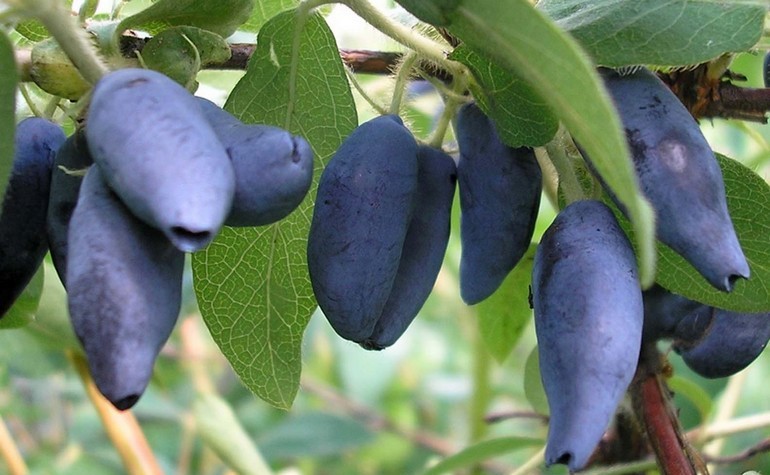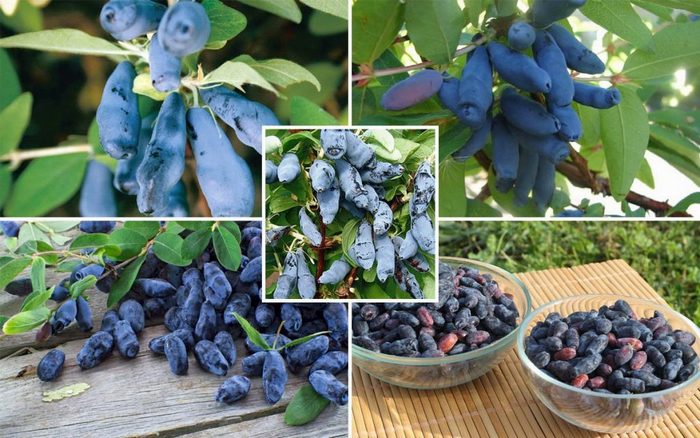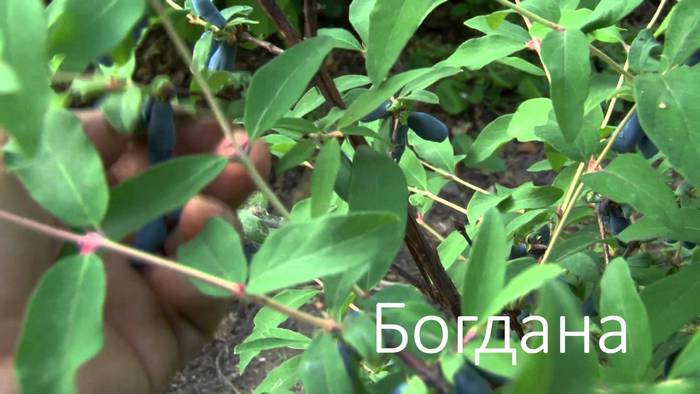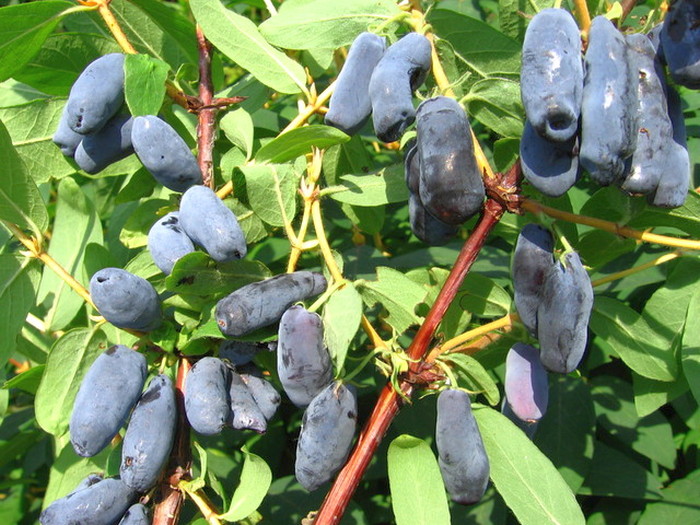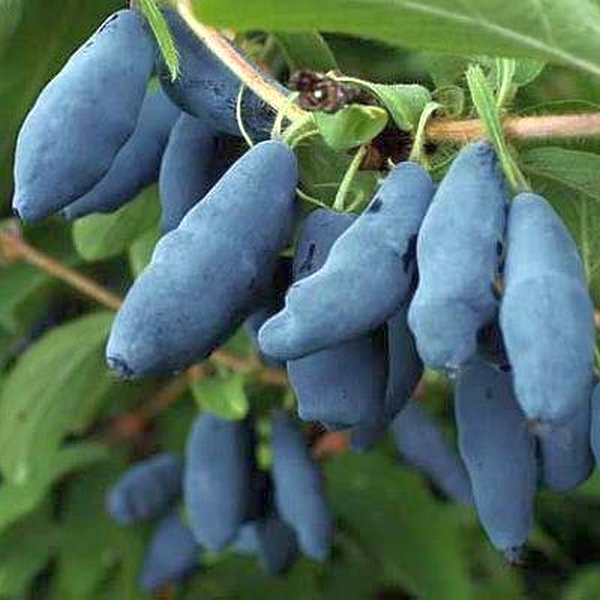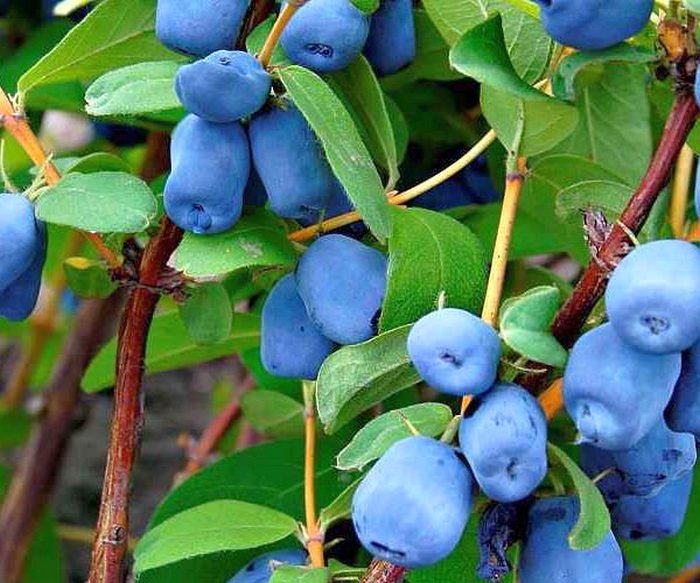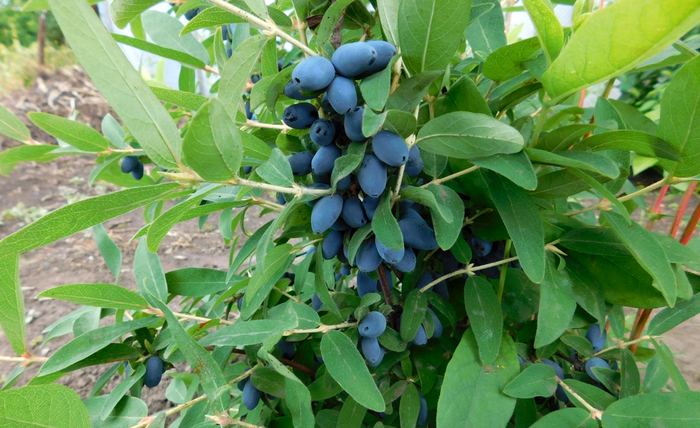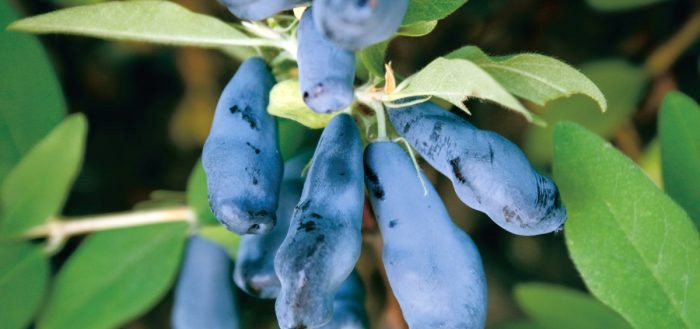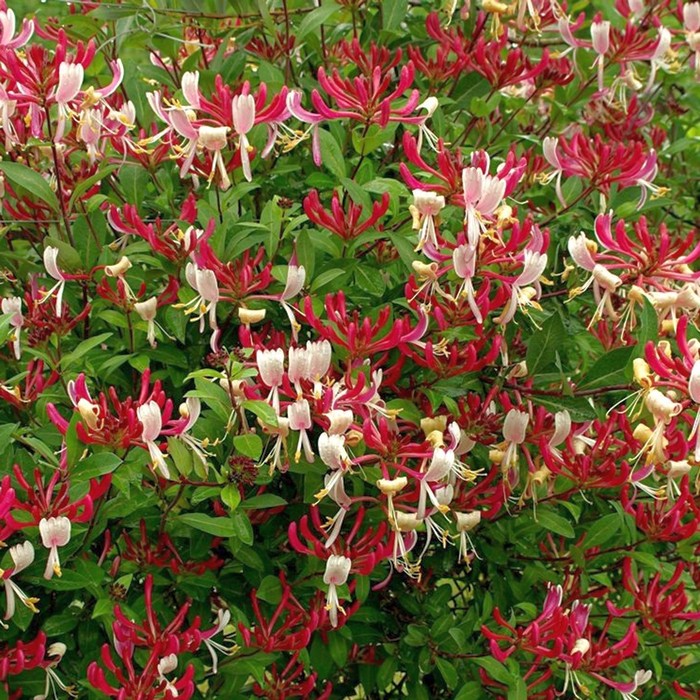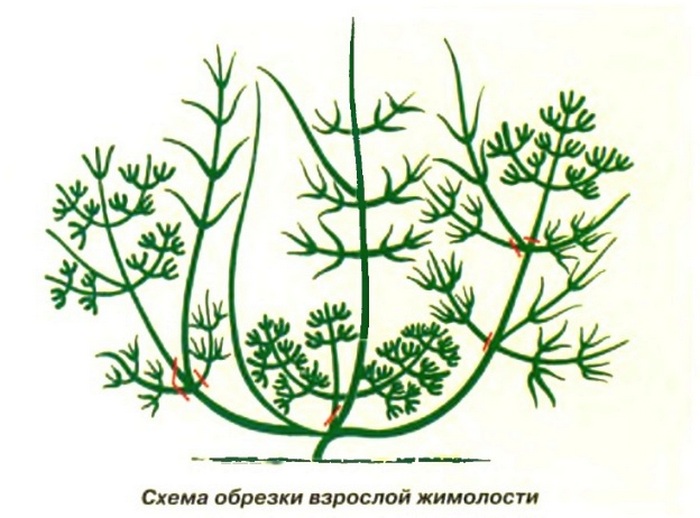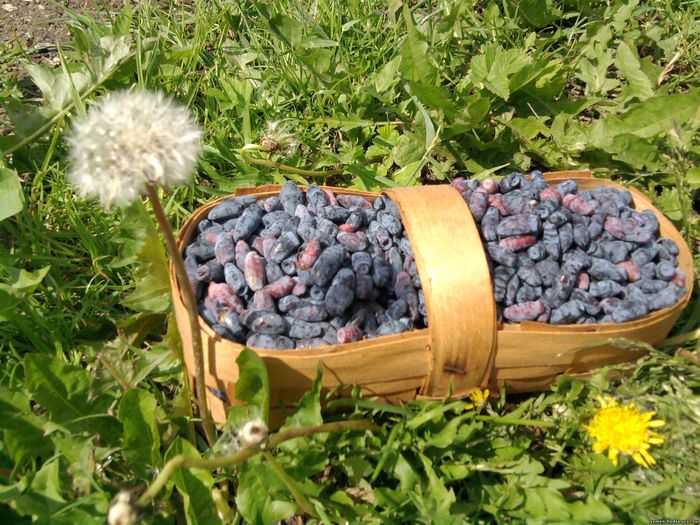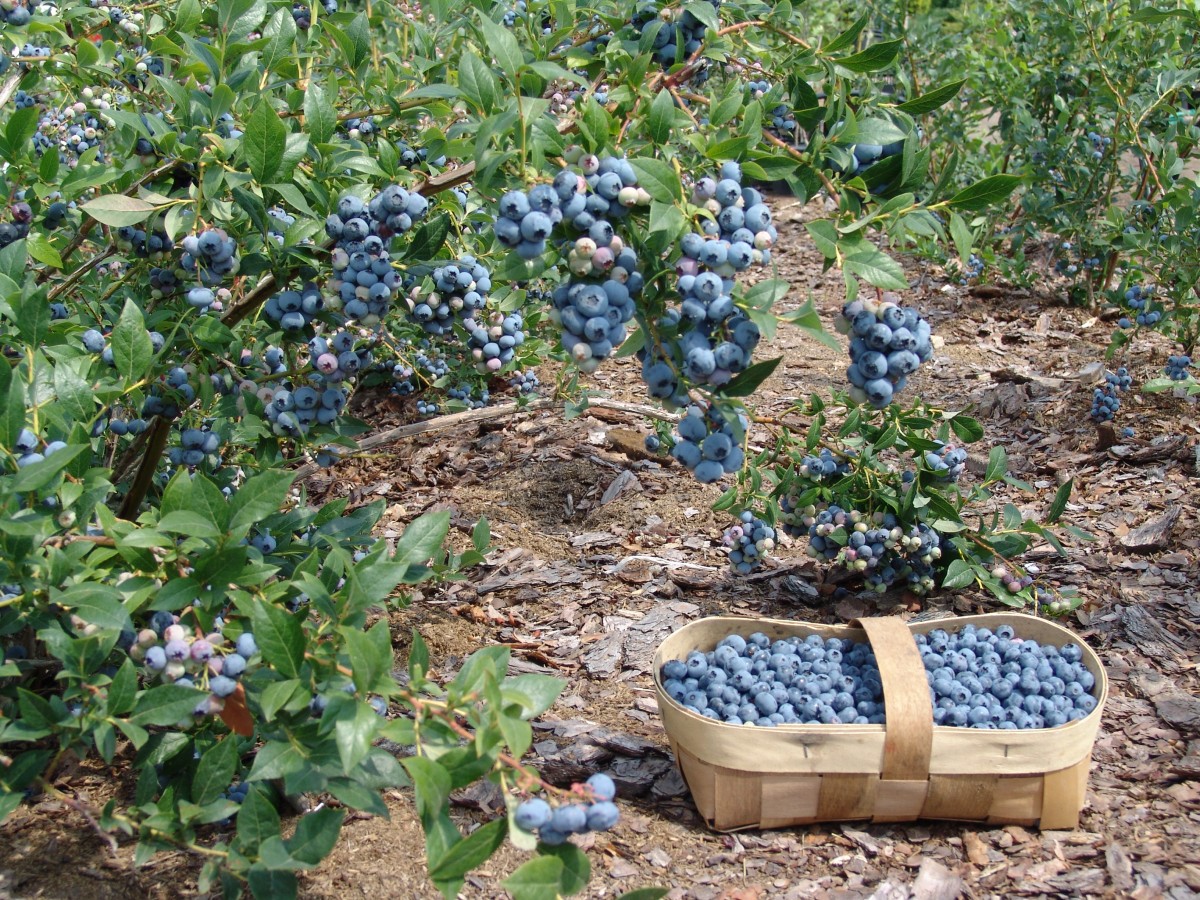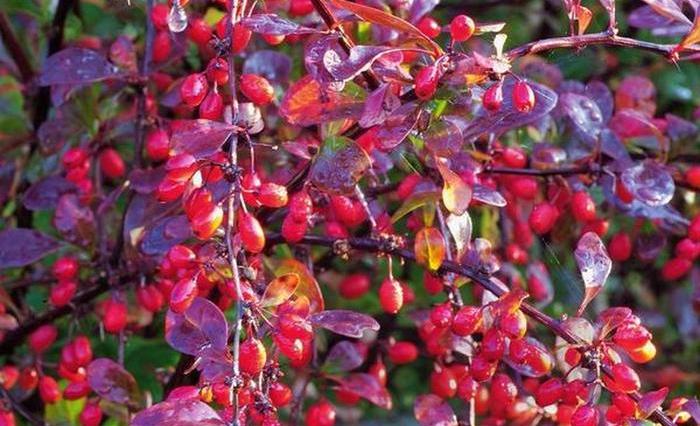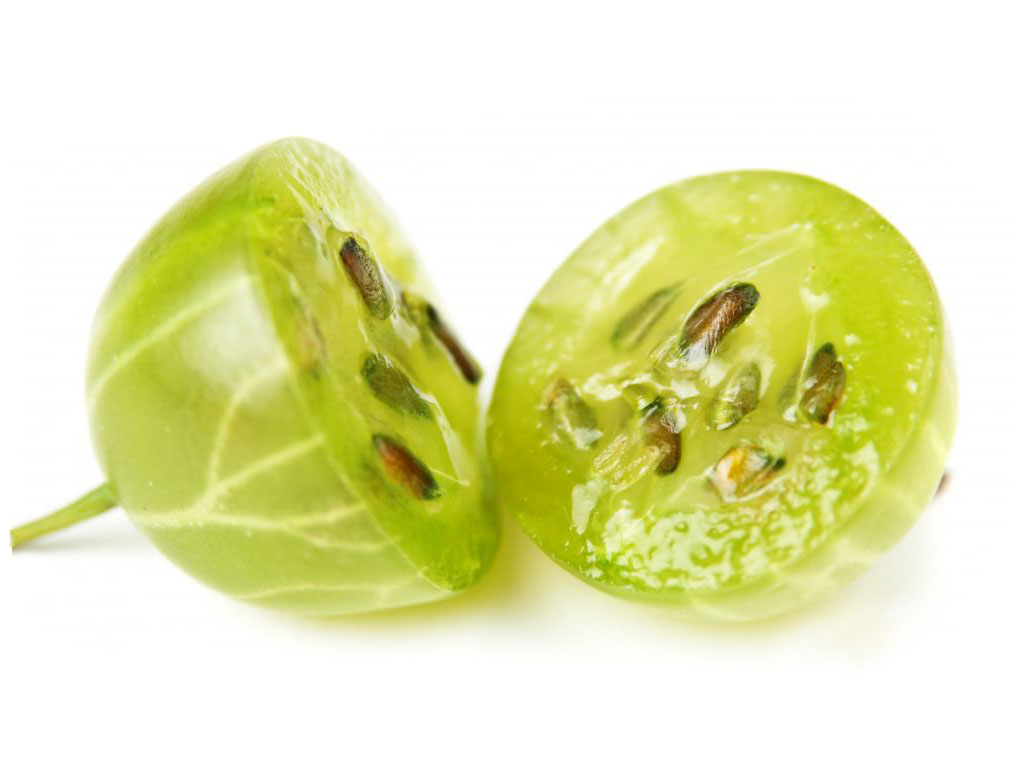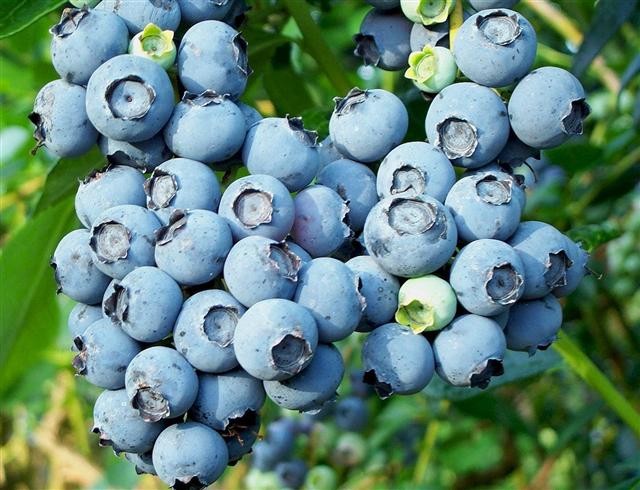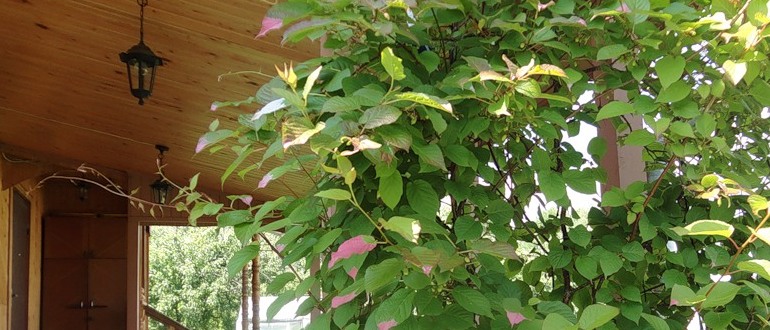Content:
Despite the fact that edible honeysuckle is not the most popular berry found in garden plots, the number of its fans is quite large. All because of the beneficial properties of the fruits of this plant. In addition, plant maintenance is quite simple.
Why is edible honeysuckle attractive
Honeysuckle is a very healthy food product. It contains selenium, which is responsible for the youth of cells, as well as a large number of trace elements and vitamins. The berry contains phosphorus, magnesium, iron, potassium and calcium. It contains oxalic, malic and citric acids. Honeysuckle is a real storehouse of vitamins P and C.
The benefits of regular consumption of this fruit and berry plant are, first of all, in a beneficial effect on the composition of the blood, as well as the cardiovascular system. Berries are very useful for vitamin deficiency, atherosclerosis, hypertension, liver disease, gastritis and a number of other diseases.
Edible honeysuckle varieties
Before planting honeysuckle in the country, you should understand its varieties and varieties, as well as how much care they require. Despite the fact that the berry exists in more than 200 varieties growing in many areas of the northern hemisphere, not all of them are widespread in Russian conditions. Let us consider in more detail several popular sweet varieties of honeysuckle for the Urals, Siberia and central Russia, from which you can choose an option for planting in the country.
Bogdan
Bogdana is a hybrid obtained from two types of blue honeysuckle. The plant grows not too tall and has a slightly spreading crown. This garden ornamental variety does not begin to bear fruit very early, but at the same time it has a high yield. The taste of berries is sweet and sour, the shape is oval. The fruits have a strong aroma.
Kamchadalka
This berry belongs to cold-resistant and productive varieties. The ripening period of berries is average. The shrub grows to about one and a half meters. The plant has large, slightly pointed berries. This variety is best planted in temperate climates. It perfectly tolerates temperature changes, does not require special care and pleases with a high yield - about 3.5 kg from one bush.
Long honeysuckle
Another edible honeysuckle variety that can easily find a place in the country is long-fruited honeysuckle. Its shrub is not too tall, but very sprawling. The berries are large, sweet and sour, cylindrical in shape. It belongs to early ripening varieties and gives a rich harvest. The root system of this honeysuckle is pivotal - it penetrates deep enough into the ground and makes the plant resistant to frost and drought.
Blue spindle
The edible honeysuckle Blue Spindle is fast-growing and high-yielding. From 1 bush, an average of 1.5 to 2.5 kg of berries are harvested. The variety is resistant to cold and drought. Among the disadvantages can be called a strong crumbling of ripe fruits and a not too remarkable taste. If the summer is dry, the berries of this variety have a slightly pronounced bitterness in taste.
Cinderella
Cinderella is an early variety of honeysuckle. Has aroma reminiscent of berries such as strawberries. The yield is high - up to 3 kg from an average bush. The plant is not prone to diseases and tolerates frost well. The care is not too whimsical. The variety does not like the sun, but it should not be shaded too much either - any semi-shaded area is suitable for planting.
Enchantress
This variety has a compact and slightly spreading bush that rarely grows above 1.5 m. The fruits are large enough for honeysuckle - from 1 to one and a half grams. The shape of the berries is pear-shaped, the color is dark blue with a pronounced waxy bloom. The main advantages that the sorceress honeysuckle has are quite dense pulp and thin skin. Ripe fruits do not crumble, even if they are overexposed on a branch.
Moraine
This variety ripens early. The berries stay on the bushes for a long time, without crumbling. The fruits themselves are long and large, taste tart-sweet without bitterness. The yield of the variety cannot be called high - just over a kilogram per bush. The shrub itself is medium in size.
This is far from all of the varieties bred. So, choosing the best honeysuckle varieties for the Urals or any other region, choosing the right option will not be difficult.
Honeysuckle is not always planted in garden plots for the sake of berries. The Kaprifol variety, for example, is actively used for landscaping areas. This honeysuckle is a vine that braids any support it grows next to. But the main aesthetic advantage of this inedible variety is flowers of amazing beauty.
How to plant and care for edible honeysuckle
Especially important for such berries as honeysuckle edible planting and breeding care. If the plant is properly planted, watered and fertilized, a good harvest will not be long in coming.
The main stages of planting
Planting honeysuckle should begin by examining the root system of the seedlings. If the root is dry, remove it. Since we are talking about a perennial plant, the planting holes must be placed at a sufficient distance from each other, taking into account the growth of the shrub in the future.
Further, the sequence of actions should be as follows:
- Prepare a hole for landing;
- Fertilize it with compost;
- Pour a small amount of water into the hole;
- Place the shoots, after straightening the roots;
- Pour again with water and compost;
- Mulch the hole.
Honeysuckle seedlings usually take root without much problem.
We water and feed
For those who know all about honeysuckle, the fact that the plant loves water will not be a revelation. Therefore, if the summer is dry enough, careful attention should be paid to watering. It is recommended to use water that is settled in a container and warm. After watering, you must carefully loosen the soil under the bush. The main condition is to do this carefully so as not to damage the root system. If the root is damaged, both the adult plant and the honeysuckle seedling will wither.
Do not assume that after planting fertilizers were added to the hole, the plant will no longer need feeding. Within a year, the answer to the question: if honeysuckle grows poorly, what should be done in spring, it will become obvious. Spring top dressing must necessarily contain nitrogen to build up green mass, and autumn dressing must contain phosphorus and potassium in order to get a decent harvest next year. During fruiting, it will not be superfluous to water the bush with an infusion of ash. To prepare a solution for a bucket of water, 0.5 kg of ash will be required.
Pruning honeysuckle
Any agricultural technician and simple gardener knows how important pruning is for any fruit and berry crop. This procedure is not intended to form an attractive, from the point of view of aesthetics, a bush, but so that the planting of any kind of berry ultimately leads to an excellent result.
The first pruning is done literally ten days after the cutting or seedling is in the ground. Usually this time is enough for the plant to have time to acclimatize. At this stage, weakened shoots (if any) are removed.
After five years, the yield from one bush will inevitably decrease. You will need to rejuvenate the plant by completely removing old shoots. This procedure is allowed to be performed on average once every two to three years.
Harvesting
Having figured out where to plant the honeysuckle berry and how to care for it, and having found the exact answer to the question of what honeysuckle loves more: the shade or the sun, you can count on getting a good harvest.
The easiest way to collect honeysuckle varieties with crumbling fruits is by shaking them off. Only first, you should place a film or cloth under the bush to make the berries easier to pick.
Ripe edible honeysuckle is very soft and tender, which makes it easily wrinkled. It is better to lay the crop in a shallow container in a thin layer.
How edible honeysuckle is propagated
Berry propagation is possible in three main ways:
- seeds;
- green cuttings;
- dividing by bushes.
Seed propagation
Breeding honeysuckle by means of seeds is more suitable for those who like to experiment. When using seeds, you cannot know with absolute certainty what will grow from them in advance. So for those who are interested in breeding a particular variety, the use of seeds is a contraindication.
There are three sowing dates:
- autumn - immediately after picking berries; seedlings must be carefully covered for the winter so that in the spring they can successfully continue the growing season;
- podzimny - carried out at the end of October; seedlings have time to harden in the cold, they develop a more powerful root system;
- spring - sowing seeds is done in the earliest spring in greenhouses; growing seedlings in a container should be carried out during the year; transplanting into open soil should be carried out in May next year.
Propagation by green cuttings
Usually, green cuttings are diluted in summer. The most powerful young shoots are chosen for cuttings. Cuttings about 10 cm in size are cut from their middle part.This should be done in such a way that on each separate part there are 2 pairs of leaves and an internode. The cut is made at a 45 degree angle. Rooting of green cuttings is done in a substrate or in water. They are transplanted into the ground after the appearance of a full-fledged root system.
Division by bushes
Bush division is practiced quite often. Whether or not a shrub is suitable for reproduction can be understood by the appearance of the plant. It should be an adult, but at the same time quite young, with 6-7 skeletal branches, which are buried at the base into the ground. The bush must be healthy - any disease is a contraindication for reproduction.
In autumn, the plant is removed from the ground with roots, and the shears are divided into several parts. At this stage, you should make sure that each individual piece has several shoots and a sufficient piece of root.
Honeysuckle compatibility with other plants
Since the root system of any plant secretes biologically active substances, you should choose the neighborhood for honeysuckle wisely. Otherwise, two incompatible cultures will inhibit each other's growth. Gooseberries and black currants are the optimal neighbors for honeysuckle. The requirements for growing conditions for the listed plants are similar, but diseases and pests are different. Also, the berry gets along well with stone and pome crops.
Currently, honeysuckle is not among the most popular berries in the garden plots of Russians. But it gets along well in any conditions and has tasty healthy berries. So, if you are looking for something new to plant in the country, it is strongly recommended that you take a closer look at this option.
